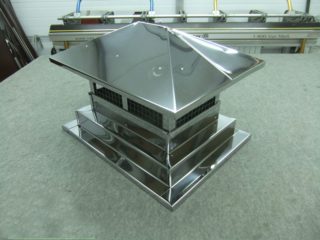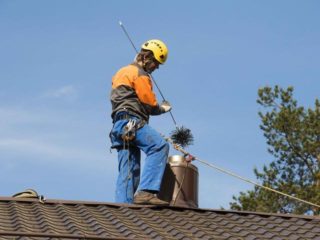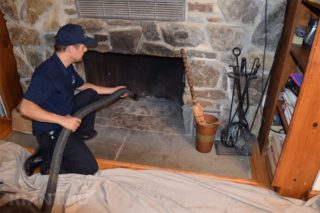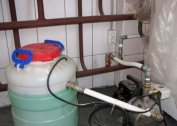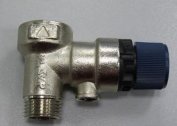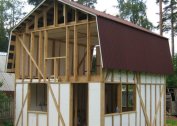Strong smoke of the furnace leads to an excessive consumption of fuel. And if the child goes into an unventilated room, it is mortally dangerous for people and animals who are there. If the cause of the problem is not due to structural defects, it is easy to fix it with your own hands. The main thing is to find out why the stove is smoking.
The main causes of smoke
Owners of private homes often face the fact that on windy days the stove “spits” smoke. Usually this is due to the insufficient height of the head. But it does not always need to be rebuilt. It is enough to fix, increase the visor.
There are other causes of smoke:
- Craving weakens or disappears. It can occur due to clogging of the chimney with soot or snow, insufficient air flow, and sometimes due to structural defects in the smoke channel.
- The power of the stove is boosted. Smokiness occurs in advanced designs, such as a bell-type furnace, if they try to “crack it” more than it is capable of.
- Not enough air supply. If the doors and windows are locked tight, the stove begins to "suffocate."
- Thrust overturns. Most often, this occurs if there has been no kindling for several days. Due to downtime, the air stream does not go outside, but stretches into the room along with smoke.
The operating time of the furnace depends on the quality of its construction and materials. But sooner or later, any design wears out. When the stove ages, a thick layer of soot accumulates inside, reducing the lumen of the chimney, and cracks in the brick sides that break the seal. These are also possible causes of smoke. Here you need cleaning and restoration of the device.
If problems with smoke occurred in a completely new furnace, the problem is usually imperfect design. It is necessary to call the stove-maker, so that he determines whether something can be changed by small forces. Most likely, it will be easier and cheaper to finalize the design than to destroy and build the stove again.
These reasons apply to almost all modifications, including the Russian stove. But for simple large heaters, power boosting is hardly possible.
A stove in a bathhouse, sauna or garage may have special occasions for smoke. If the chimney is clogged with soot and dirt, it will also begin to “push” and “snort”. The same goes for cracks in the wall that need urgent coating. But there are special problems that arise with stove heating of small buildings. An obstacle may be located near the bathhouse. Smoke hits it and returns. To cope with the trouble, you need to equip the bath pipe with a windproof hood. Since the bath is not used every day, due to temperature changes, the top of the pipe begins to collapse. It needs to be shifted and, if necessary, slightly increased.
If the stove in the bathhouse or utility room is not folded correctly, it must be redone.
Only in one case can a constructive problem be solved very quickly and without the involvement of a professional. Sometimes stoves in utility rooms are heated with straw, dry grass. If at the same time a smoke is formed, the problem is a large length of blowing. To make it smaller, put half a brick at the end - flat or on an edge. The problem will be solved.
Norms and Rules
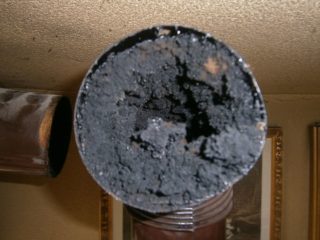
Most often, smoke comes from troubles with the chimney. It is either clogged or improperly initially equipped. The most important point is the height of the chimney.The SNiPs indicate the exact dimensions for different structural sizes of the roofs or the location of the pipe structure itself on the roof. For houses with flat roofs, this parameter cannot be less than 60 cm, if you count from the highest point of the parapet or superstructures, for example, a terrace canopy.
If there is a garden with tall trees around the house, or neighboring houses are located nearby and higher, it is better to make a pipe so that the smoke does not beat against obstacles, but freely leaves into space.
Solution to the problem
If the stove smokes in the house, first of all you need to check the draft. Throw a lit piece of paper into the firebox and see if smoke is drawn into the chimney. If so, all is well. If he tries to break into the room, this indicates poor traction. Most likely, you need to clean the chimney. There are more modern ways of checking with the help of special tools - a differential pressure gauge, anemometer, and gravity tester, but they are available only to professionals.
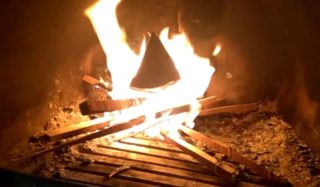
Trouble with reverse traction is eliminated by heating the chimney pipe. This can be done through the cleaning door located as high as possible, by opening the hog in the attic or by throwing burning paper in the outlet. Light pulp experiments are carried out if the first two methods do not work. To avoid this problem, the stove must be regularly heated.
Burning paper will help eliminate gas plugs. But you need to burn it in a firebox with an open door, laying one sheet after another. You can also use chips, successively throwing them with handfuls.
To allow the stove to work properly, install deflectors on top of the pipe. These devices interfere with gusts of wind:
- Air flow hits the cylinder wall.
- It is stratified into many small “winds” and weakens.
- Weak streams rise through the pipe and merge with the smoke, pulling it out.
Deflectors increase traction, prevent the creation of turbulences and the return of smoke into the chimney.
You can use the emergency forward valve. Its opening quickly restarts the smoke in the chimney. When opening the smoke channel is blown, gas plugs break through. Through the valve, you can check where the main obstacle to the movement of air is.
Do-it-yourself stove and chimney cleaning
To clean the chimney, if the stove is used for seasonal heating and cooking, you need once a quarter. More often this should be done if tarry or raw firewood is used. This causes excessive layering and narrowing of the lumen. Mechanical cleaning can be done independently using traditional techniques that have not changed in recent centuries. Work is carried out with goggles and gloves. For action at height, non-slip shoes and insurance are needed.
From the roof
You will need a cable on which hard brushes are attached to clean the chimney from soot, a heavy round weight with an eye. The brush can be made from an old plastic bottle.
Cleaning is carried out in five stages:
- To prevent the ingress of soot, the furnace and hatches are hung with a wet rag.
- Remove the head, inspect the channel.
- Cleaned with a broom from cobwebs and garbage.
- Punch a blockage with a weight several times.
- They clean the walls of the chimney with brushes.
In conclusion, you will need to clean the soot from the roof and inside the furnace.
Furnace side
Need a special brush with a stiff but flexible fiberglass cable. It can be purchased at a household goods store.
Cleansing also comes in five steps:
- Unscrew the hatch for cleaning,
- Clean the entrance of debris.
- Fix a suitable brush (for metal pipes only plastic).
- They clean the channel, slowly moving the tool up.
- Similarly, they carry out cleaning from the firebox.
It remains to remove the soot and return the plugs in place.
Cleaning the chimney is not a complicated procedure, but dirty and tiring. To facilitate the task, it is necessary to carry out preventive measures using special fuel. It is impregnated with chemicals, with the help of which the deposits themselves fall off into the furnace or turn into gas and fly off into the pipe. Be sure to carefully read the instructions. Some of these products are toxic; measures can be taken only by tightly closing the firebox with an iron shutter.
You can use folk methods. Periodically complete the kindling with several alder or aspen wood poles. This prevents soot formation. But you don’t need to add some powders to the wood, since some of these methods can lead to an explosion.
To prevent the stove from smoking, periodically check the draft. Do not use coniferous or wet firewood, litter. From time to time, carry out routine inspections of the chimney, because most often the smoke of the stove is due to its clogging. However, other problems can lead to this. If you correctly determine the cause, you can quickly correct the situation yourself or with the help of a specialist.

